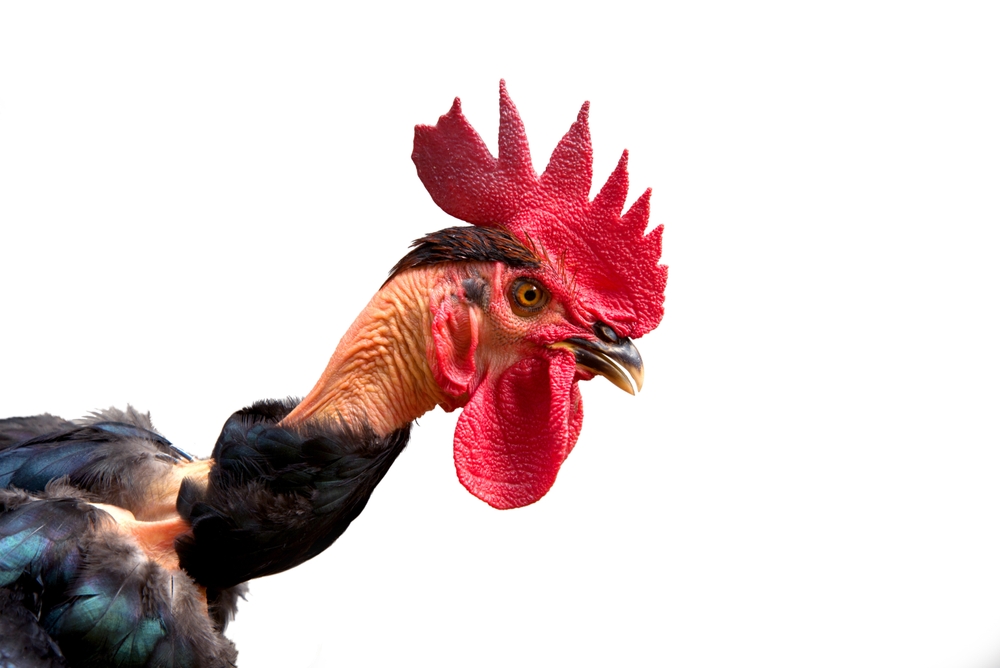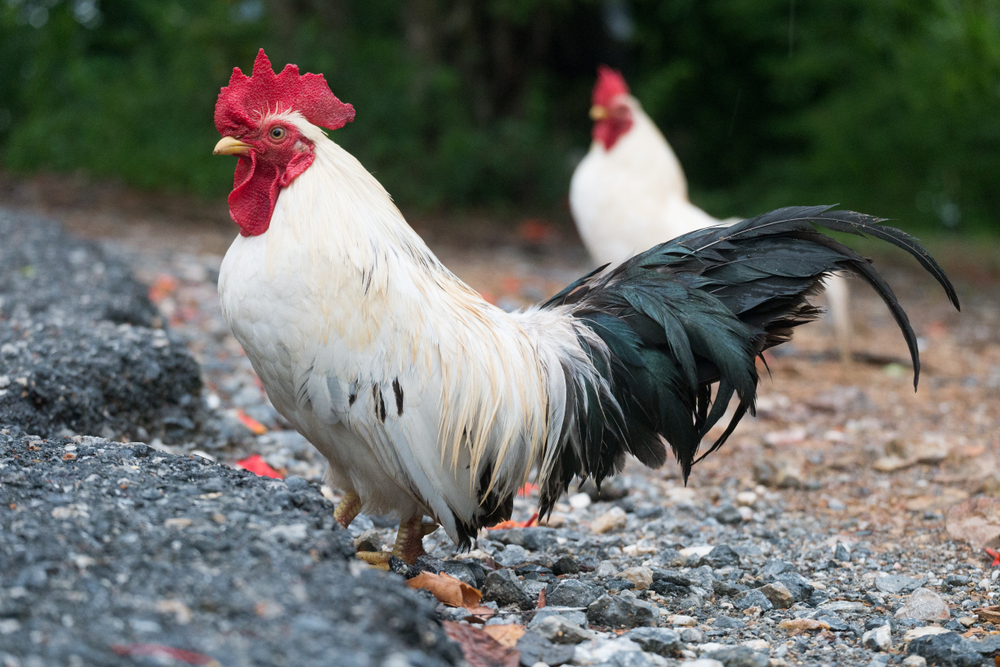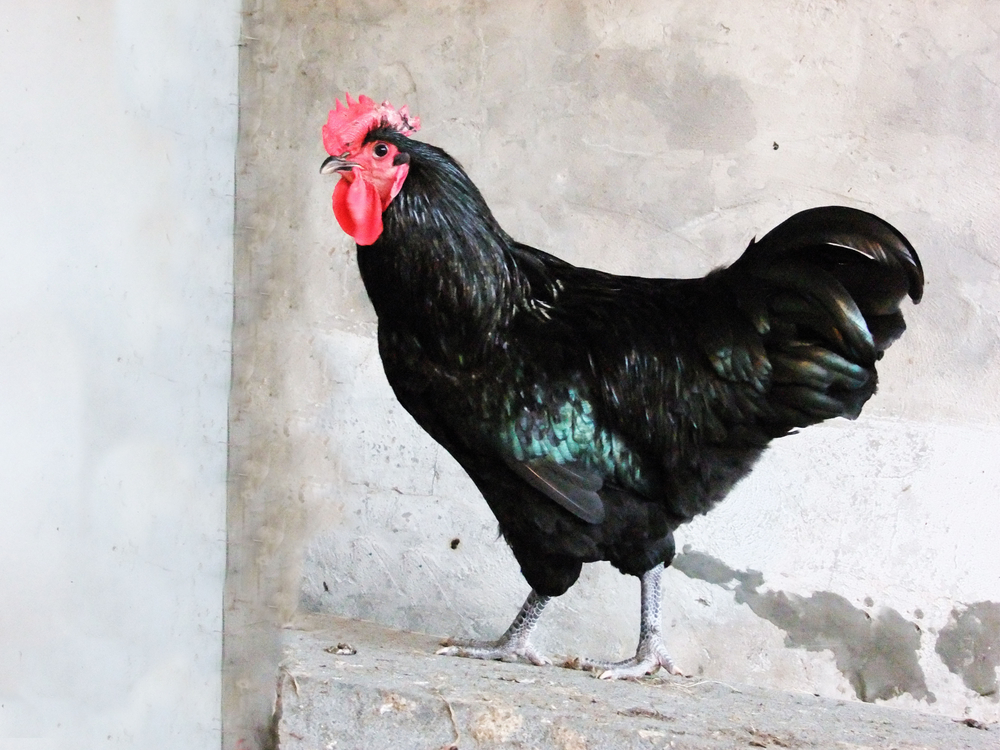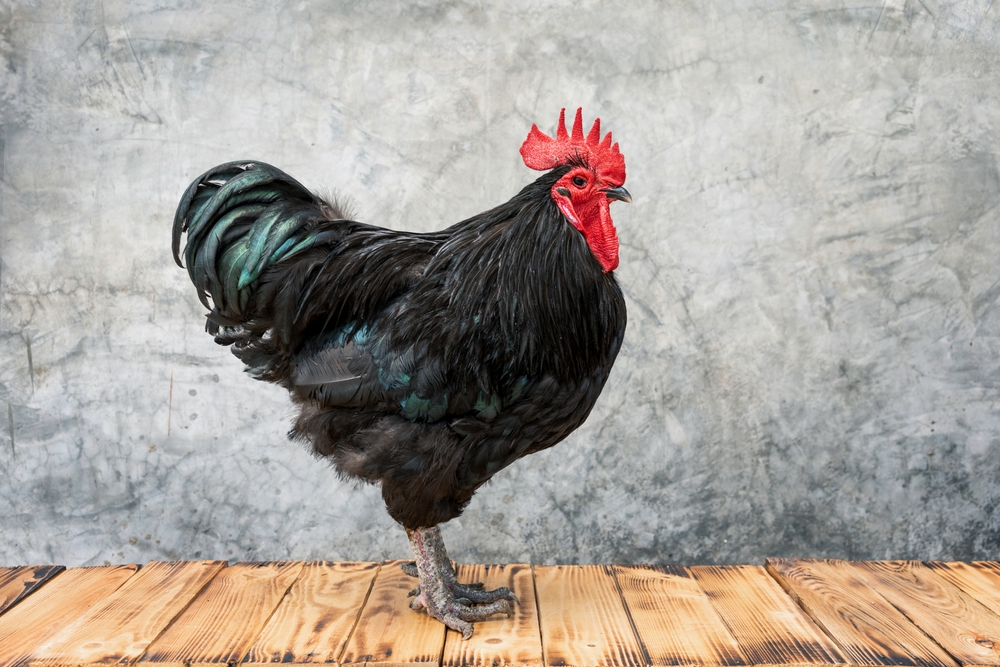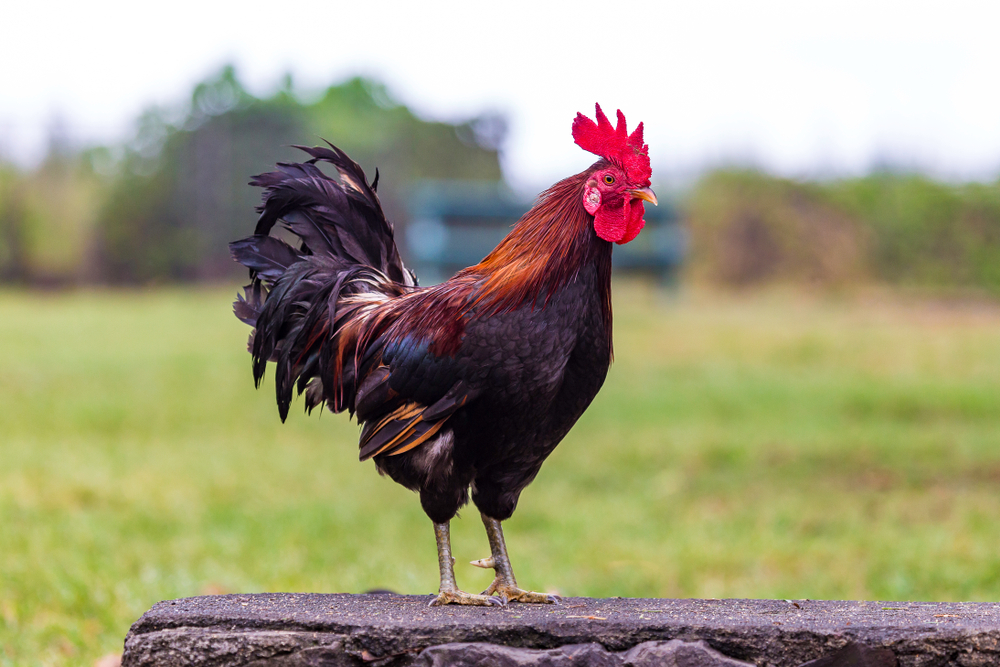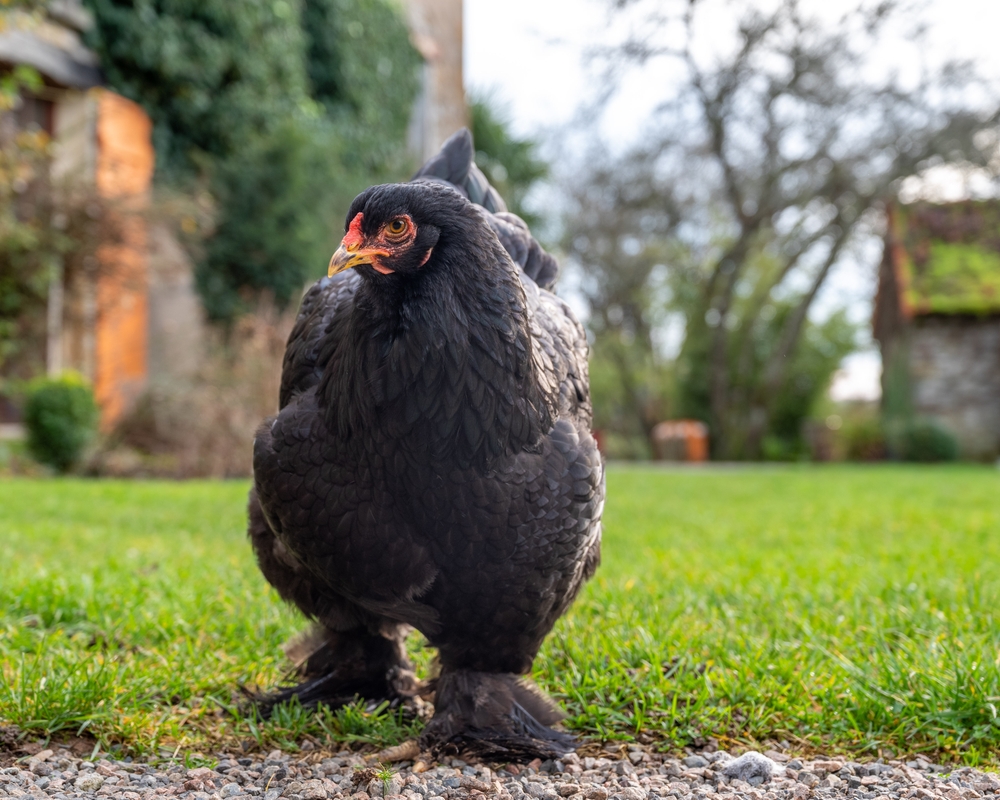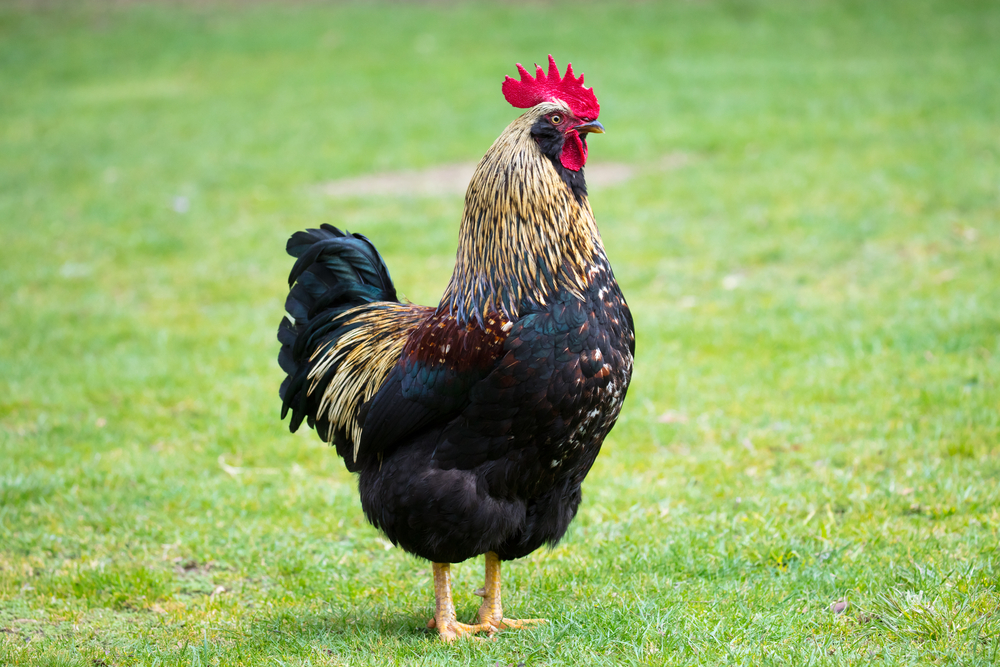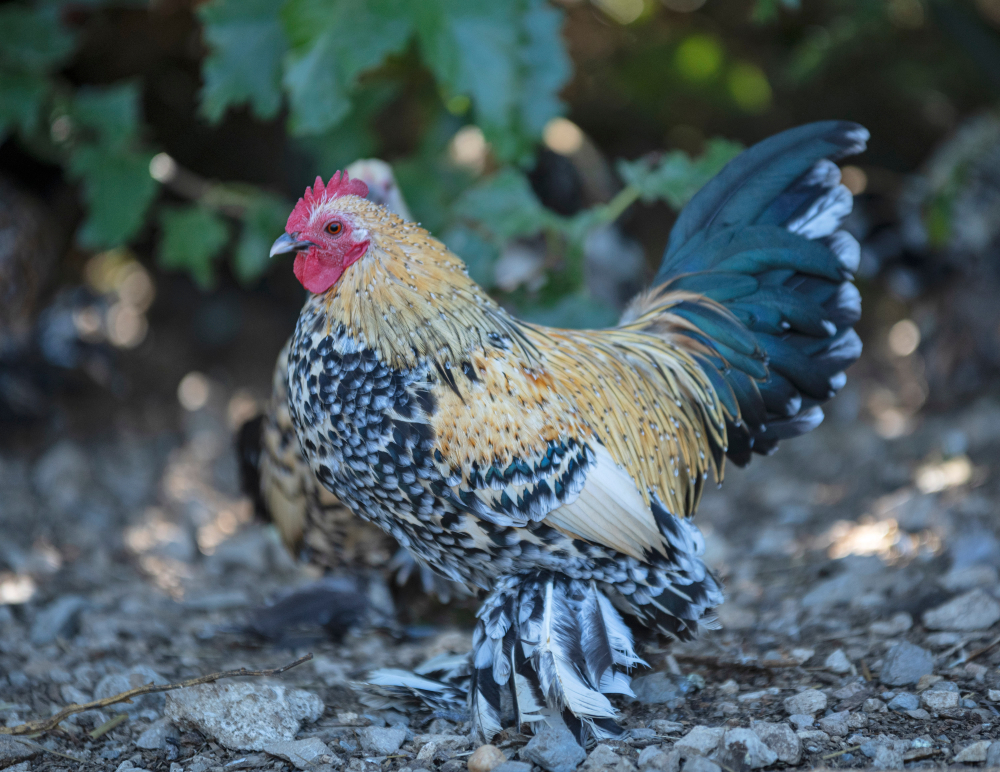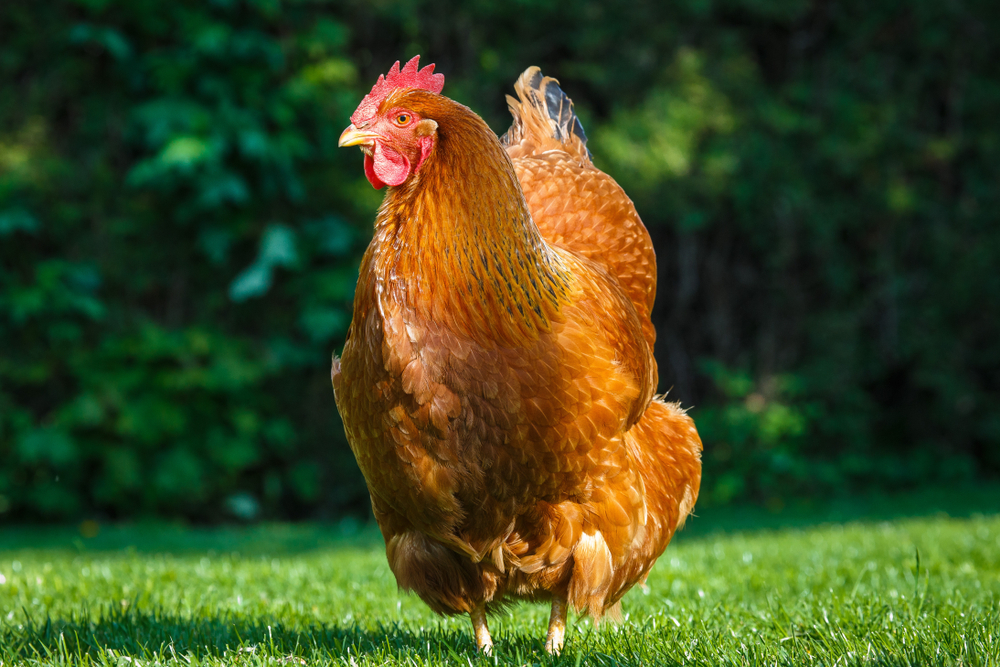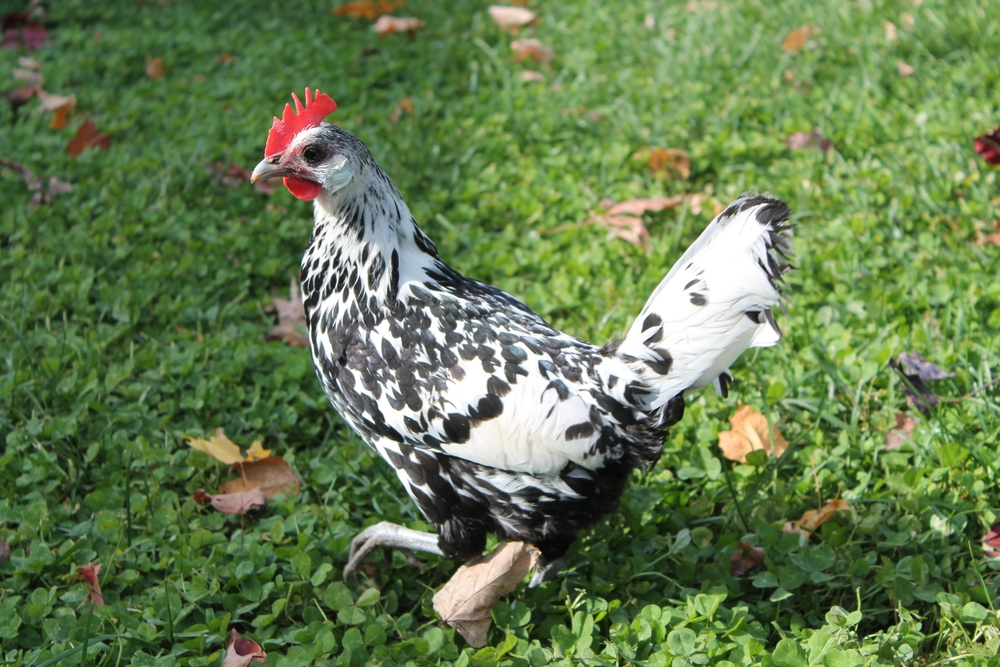The closest related breed to the Naked Neck is the Transylvanian Naked Neck, from which most modern Naked Necks descend. This breed shares the same dominant “Na” gene that causes the bare neck trait, along with similar body structure, temperament, and dual-purpose qualities.
About
The Naked Neck, often called the Turken due to its turkey-like appearance, is a hardy and distinctive chicken breed characterized by its naturally bare neck and partially featherless body. Though it may appear to be a hybrid between a chicken and a turkey, it is purely a chicken breed. Its origins trace back to Transylvania and Germany, where it was developed for improved meat production and adaptability.
This breed’s lack of neck feathers is caused by a genetic trait that also reduces overall feather coverage by about 30–40%. This gives the Naked Neck excellent heat tolerance, making it popular in warmer climates, but it is also hardy in cold weather due to its robust constitution.
Naked Necks are medium-sized birds, with roosters weighing about 3.9–4.1 kg (8.5–9 lbs) and hens about 3–3.4 kg (6.5–7.5 lbs). They have a muscular build, upright posture, and come in various colors including black, buff, red, and white.
They are dual-purpose, producing 150–200 medium to large brown eggs per year while also yielding a good quantity of quality meat. The reduced feathering makes them easier to pluck, a trait valued by small farmers and homesteaders.
Naked Necks are known for being docile, calm, and good foragers. They adapt well to both free-range and confined conditions and are relatively disease-resistant. Despite their unusual appearance, they are affectionate and often tame, making them a favorite among poultry keepers who appreciate utility and uniqueness.
The Naked Neck’s scientific classification is Gallus gallus domesticus, and it belongs to the family Phasianidae.
Physical Characteristics
Plumage:
The Naked Neck is easily recognized by its completely bare neck and upper crop area, a natural genetic trait that reduces feather coverage by about 40% compared to other chickens. The rest of the body is covered in standard plumage, which can come in a variety of colors, including red, black, white, buff, cuckoo, and blue. Feathers are smooth and lie close to the body, giving the bird a clean, streamlined look.
Head and Comb:
The head is of medium size with a single, upright comb of 5 to 6 points. The comb, wattles, and earlobes are bright red, contrasting sharply with the bare skin of the neck. The bare neck skin ranges from pinkish in lighter varieties to red in darker-feathered birds. The beak is short, strong, and horn to yellow in color. Eyes are reddish bay.
Body:
The body is broad, deep, and well-muscled, giving the breed a sturdy dual-purpose frame. The reduced feathering makes the breast and shoulders appear more prominent. The back is of medium length and slopes gently toward the tail.
Legs and Feet:
The legs are clean (feather-free), sturdy, and yellow or slate in color, depending on the variety. The feet have four strong toes, with the undersides usually white or pink.
Tail:
The tail is moderately full and carried at a slight upward angle. Roosters have long, arched sickle feathers, while hens have shorter, more compact tails.
Size:
-
Male Weight: 8.5 lbs (3.9 kg)
-
Female Weight: 6.5 lbs (3 kg)
-
Bantam Variety: Males around 37 oz (1.05 kg), females around 32 oz (0.91 kg)
Sexual Dimorphism:
Males are larger and more upright, with longer neck skin folds and more pronounced combs and tails. Females are rounder in body shape with smaller combs and wattles.
The Naked Neck’s bare neck, reduced feather coverage, and sturdy build make it one of the most unique and easily recognized chicken breeds in the world.
Reproduction
Mating Behavior:
Naked Necks are generally calm and adaptable, making breeding straightforward in both free-range and confined environments. Roosters are attentive but not overly aggressive, and hens accept mating readily. The reduced feathering around the neck and body minimizes heat stress during mating in warm climates, which can help maintain fertility rates.
Breeding Season:
They can breed year-round in mild climates, but fertility peaks in spring and summer when conditions are optimal. In hot climates, their reduced feathering helps maintain breeding activity even during higher temperatures, when other breeds may slow down.
Egg Laying:
Naked Necks are reliable layers for a dual-purpose breed.
-
Annual Output: Around 150 to 200 large eggs per year.
-
Egg Color: Light brown to cream.
-
Egg Size: Large.
They maintain steady laying across a range of climates, including warmer regions where some breeds underperform.
Broodiness and Incubation:
-
Naked Neck hens can be moderately broody, with good maternal instincts when they do set.
-
They tend to be attentive mothers, raising chicks successfully in free-range conditions.
-
Incubation Period: About 21 days.
-
Due to their bare neck and reduced feathering, they may require slightly more nesting material to maintain warmth for eggs in colder environments.
Chicks:
-
Appearance at Hatch: Fluffy but with bare skin on the neck area from the start. Down color varies depending on the variety.
-
Self-Sufficiency: Active and hardy, with good survival rates even in challenging climates.
-
Growth Rate: Moderate to fast, with early feather development on the body but none on the neck.
Maturity:
Hens typically begin laying at 5.5 to 6 months, while roosters reach breeding maturity at a similar age.
Naked Necks’ heat tolerance, steady egg production, and dependable parenting ability make them well-suited for small farms, especially in warmer climates.
Lifespan
Lifespan in the Wild/Farm Setting:
Naked Necks are hardy, adaptable birds that typically live 6 to 8 years in well-managed backyard or farm environments. Their reduced feather coverage makes them especially well-suited for warm climates, and they often maintain good productivity for several years. Peak egg production is usually in the first 3 to 4 years.
Lifespan in Optimal Conditions:
With excellent nutrition, predator protection, and veterinary care, Naked Necks can live longer than average for dual-purpose breeds.
-
Average Maximum Lifespan: 8 to 10 years
-
Exceptional cases: 10–12 years, especially when kept for ornamental or breeding purposes rather than intensive production.
Threats to Longevity:
-
Predation: Their calm nature can make them vulnerable to foxes, raccoons, hawks, and other predators if free-ranging without supervision.
-
Cold Sensitivity: While hardy in heat, their exposed neck skin is more susceptible to frostbite in very cold climates without adequate shelter.
-
Parasites and Disease: Prone to mites, lice, and worms without regular prevention, and susceptible to respiratory illness in damp, poorly ventilated housing.
-
Injury: Their bare necks can be more prone to pecking injuries in aggressive mixed flocks.
Adaptations for Longevity:
Naked Necks’ resistance to heat stress, efficient feed conversion, and good immune strength help them thrive in varied farming conditions, particularly in warmer regions.
Eating Habits
Diet:
Naked Necks are omnivorous foragers, thriving on a combination of commercial poultry feed and naturally sourced foods.
-
Primary Feed: High-quality layer pellets or mash with 16–18% protein, plus added calcium for strong eggshells.
-
Foraged Foods: Insects, worms, snails, seeds, grasses, weeds, and small invertebrates found while scratching.
-
Treats and Supplements: Whole grains (wheat, oats, corn), leafy greens, vegetable scraps, grit for digestion, and oyster shell or limestone for calcium.
Feeding Behavior:
-
Naked Necks are active and resourceful foragers, able to supplement much of their diet through free-ranging when given the opportunity.
-
They are less prone to overheating while foraging in warm climates due to their reduced feathering.
-
Calm at feeders, they integrate well in mixed flocks without being overly aggressive.
Foraging Times:
-
Most active in morning and late afternoon.
-
In hot climates, they seek shaded or moist areas for foraging during the midday heat.
-
In cooler weather, they remain active longer throughout the day compared to heavier, cold-sensitive breeds.
Adaptations for Feeding:
-
Strong, sturdy beaks for breaking seeds and dislodging insects.
-
Light to moderate body weight allows them to move easily across varied terrain.
-
Excellent feed efficiency, converting both foraged and provided feed into eggs or meat effectively.
Captive Diet Management:
-
A steady supply of balanced feed ensures consistent egg production.
-
Overfeeding scratch grains can lead to weight gain and reduced laying performance.
-
Extra nesting material and slightly higher calorie intake may be needed in colder weather to maintain body warmth.
Naked Necks’ efficient feed use, adaptability to diverse diets, and excellent heat foraging endurance make them a practical choice for small farms, especially in warm or tropical climates.
Uniqueness
Distinctive Bare Neck:
The Naked Neck’s most defining feature is its completely featherless neck and upper crop area, a result of a dominant genetic trait. This reduces overall feather coverage by about 40%, giving it a unique appearance and increased heat tolerance.
Heat Tolerance Advantage:
With fewer feathers, Naked Necks dissipate body heat more efficiently than most chicken breeds, making them ideal for hot climates and tropical environments where other breeds may struggle with heat stress.
Dual-Purpose Utility:
They are valued for both good egg production and quality meat, with a meaty carcass that is easier to pluck due to the reduced feather coverage.
Lower Maintenance Feather Care:
With less feathering, these birds are less prone to overheating and require less grooming effort in warm climates. They also dry off more quickly after rain, reducing the risk of damp-related illnesses.
Hardy and Disease-Resistant:
Naked Necks are hardy birds with a strong immune system, capable of thriving in free-range, backyard, or small farm settings. Their bare necks do not make them more fragile—rather, they are often more resilient in diverse conditions than fully feathered breeds.
Variable Color Varieties:
The breed comes in multiple color varieties—including red, black, white, buff, cuckoo, and blue—adding ornamental appeal alongside utility.
Calm Temperament:
Known for being docile and manageable, Naked Necks adapt well to mixed flocks and are generally non-aggressive.
The Naked Neck’s distinct look, superior heat tolerance, and dual-purpose productivity make it a standout choice for poultry keepers in warm or variable climates.
Be the First to Share Photos of This Species.
FAQ’s
1. What is the closest species to the Naked Neck?
2. How does the Naked Neck compare to other chickens?
The Naked Neck differs from most chicken breeds in several key ways:
-
Feather Coverage: Has about 40% fewer feathers, making it easier to pluck for meat production and better adapted to hot climates.
-
Heat Tolerance: Outperforms most standard breeds in warm weather while maintaining productivity.
-
Dual Purpose: Provides both good egg output and quality meat, unlike many heat-tolerant breeds that are primarily ornamental.
-
Appearance: The bare neck and upper breast give it a distinctive, instantly recognizable look.
-
Maintenance: Requires less grooming in humid environments and dries quickly after rain.
3. What national parks provide the best chances to see a Naked Neck?
As a domesticated poultry breed, Naked Necks are not found in the wild. However, they can be seen in heritage farms, agricultural exhibits, and breeding programs located within or near parklands, such as:
-
Colonial Williamsburg Rare Breeds Program (Virginia, USA)
-
Old Sturbridge Village (Massachusetts, USA)
-
Beamish Open Air Museum (United Kingdom)
-
Sovereign Hill (Victoria, Australia)
-
Netherlands Open Air Museum – Arnhem (Netherlands)
These locations keep Naked Necks as part of agricultural education and heritage livestock conservation programs.



































































